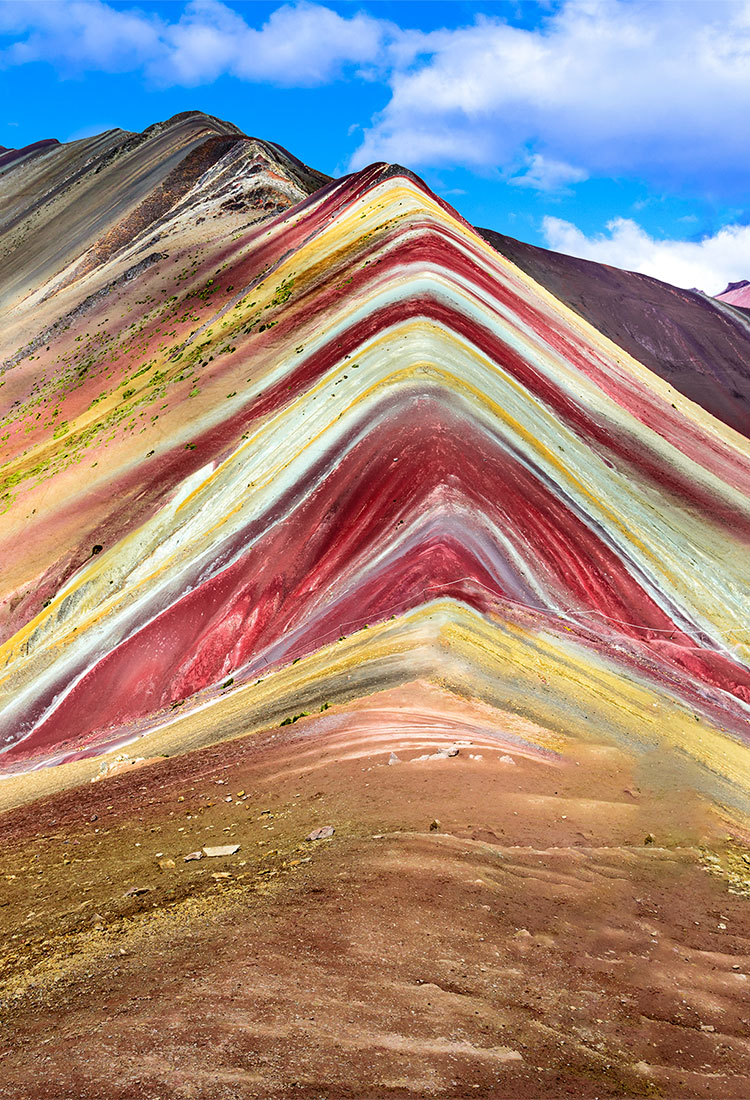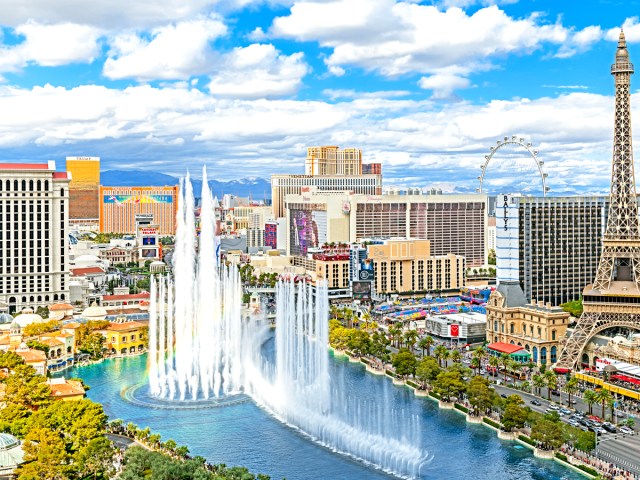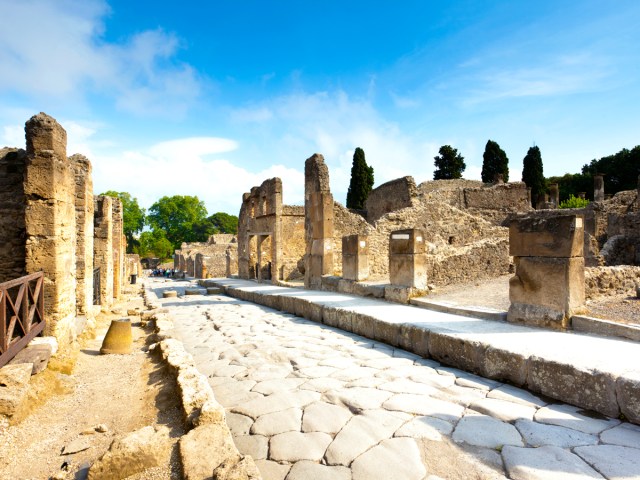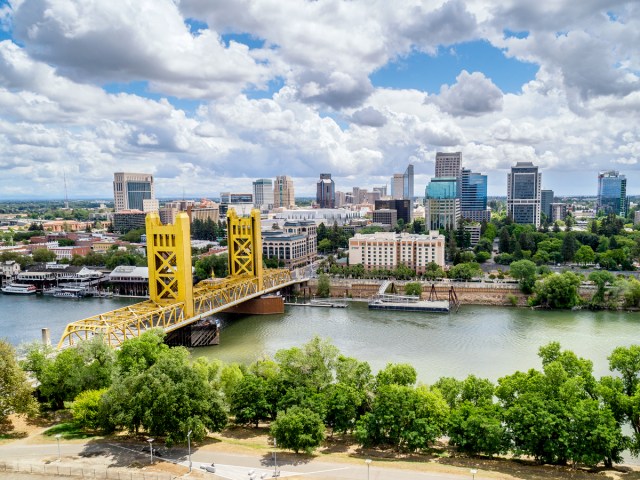Paul Gauguin spoke of color as a “deep and mysterious language, the language of dreams.” The French painter covered his canvases with the brilliant blues of Tahiti and the rich yellows of farms in Brittany. Scientists also explore the power of color in chromotherapy — based on the theory that colors can influence us mentally and physically, a belief that goes back to at least ancient Egypt. In nature, the beauty of color never fails to impress, delighting our eyes (and our cameras), whether in rainbows or rock sculptures. Here are five of the world’s most colorful locales.
Caño Cristales – Colombia

One of South America’s most beautiful natural spectacles is the “liquid rainbow” of Colombia’s Caño Cristales (Crystal Channel). The phenomenon typically occurs from June through November each year, when the conditions are ideal for the unique aquatic plants (macarenia claviger) growing in this 62-mile “River of Five Colors” to bloom in shades of bright red, yellow, green, blue, and black — a phenomenon found nowhere else in the world. There are even designated swimming areas where you can soak in the brilliantly hued waters flowing through Colombia’s Serranía de la Macarena National Park. Besides the river itself, the area is a hotbed of biodiversity. The Amazon and Orinoco river basins converge with the Andes to form an ecosystem that’s home to iguanas, turtles, and more than 400 species of birds. Book early to secure a permit and a local guide, both of which are required when visiting this protected area.
Red Sea Beach – China
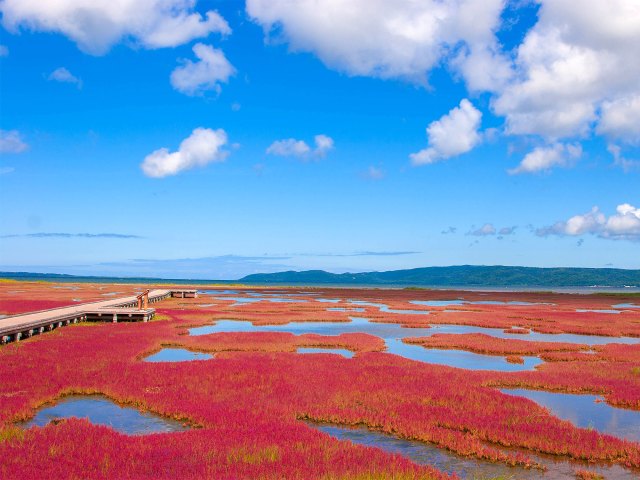
On the gulf of China’s Yellow Sea, at the mouth of the Shuangtaizi River outside the city of Panjin, lies one of the world’s largest wetlands and reed marshes. More than 260 species of birds and nearly 400 types of animals frequent these shallow tidelands, located about a six-hour drive from Beijing. Despite the name “beach,” you won’t find any sand here. But each fall, you can find an astonishing display, as the seepweed species that grows here absorbs saltwater, which turns the initially green plants to a brilliant shade of crimson. Elevated wooden walkways traverse the scarlet carpet, which stretches 16 miles along the banks of the river.
Rainbow Mountain – Peru
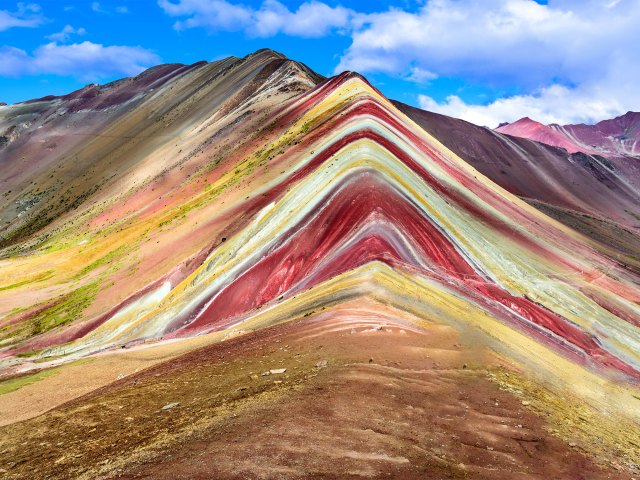
The vivid stripes of color painting Peru’s Rainbow Mountain (which locals call Vinicunca) are 100% real — although photos of this natural wonder are usually enhanced. Located in the Cusco region of the Andes, the Montaña de Siete Colores (Mountain of Seven Colors) is the result of ice that once covered this 17,060-foot peak. As temperatures have warmed over the past decade, the waters melted and mixed with mineral sediments in the soil, forming bands of red (thanks to rust), gold (iron sulfide), lavender (goethite), and green (chlorite). Getting to the mountain is an investment — requiring a three-hour drive from Cusco and a six-mile out-and-back hike that isn’t recommended for beginners or those not yet adapted to the altitude. You can rent a horse if the trek proves too difficult. March through November are typically the best months to visit.
White Sands National Park – New Mexico
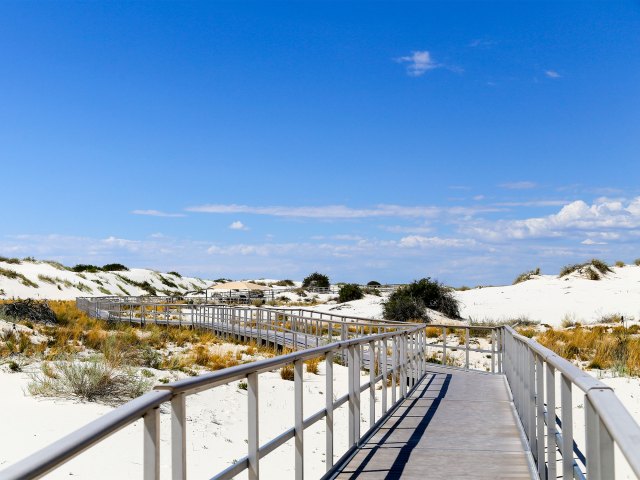
In physics, it’s argued that white isn’t actually a color — it’s a wavelength that contains every other visible hue. So the blindingly white sands of the aptly named White Sands National Park might actually be the most colorful place on the planet, spectrum-wise. Regardless of which side you pick on the color debate, the park is a place of grandeur. Nestled between the Sacramento and San Andres Mountain ranges of southern New Mexico, White Sands National Park is home to glistening dunes of white that rise from the Tularosa Basin, creating the world’s largest gypsum dunefield. Cycling, hiking, horseback riding, and sledding are popular activities at the park, which is also a great spot for stargazing. The park’s entrance road, Dunes Drive, runs through the White Sands Missile Range, and is occasionally closed for a few hours while tests are in progress.
Komodo National Park – Indonesia
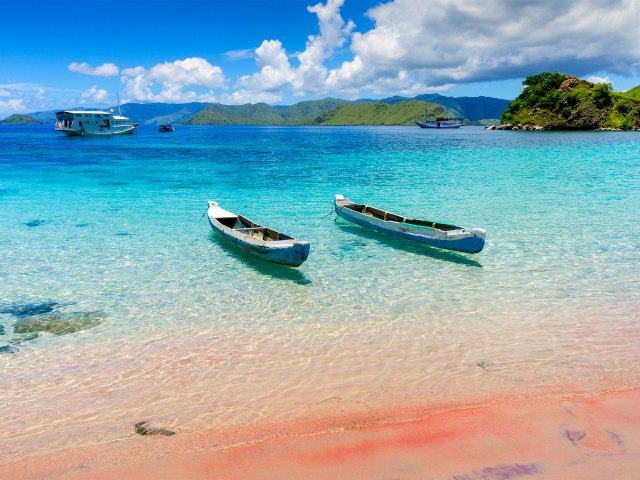
Old maps often warned “here be dragons” when depicting dangerous or unexplored territories, but on this Indonesian archipelago, it’s actually true. Three large (Komodo, Padar, and Rinca) and 26 smaller islands are home to the fierce Komodo dragon. Growing up to 10 feet long and weighing up to 150 pounds, the Komodo is the world’s largest species of lizard. But the drab-colored dragons are no match for Komodo National Park’s famous Pink Beach. One of only seven pink beaches in the world, the cotton candy-colored sands are formed by microscopic organisms called foraminifera, which produce a red pigment that blends with the white sand and results in a soft rose hue. Pink is far from the only shade in Komodo: Beneath the park’s brilliant turquoise waters are some of the healthiest and most diverse coral reefs in the world, teeming with their own rainbow of life.






